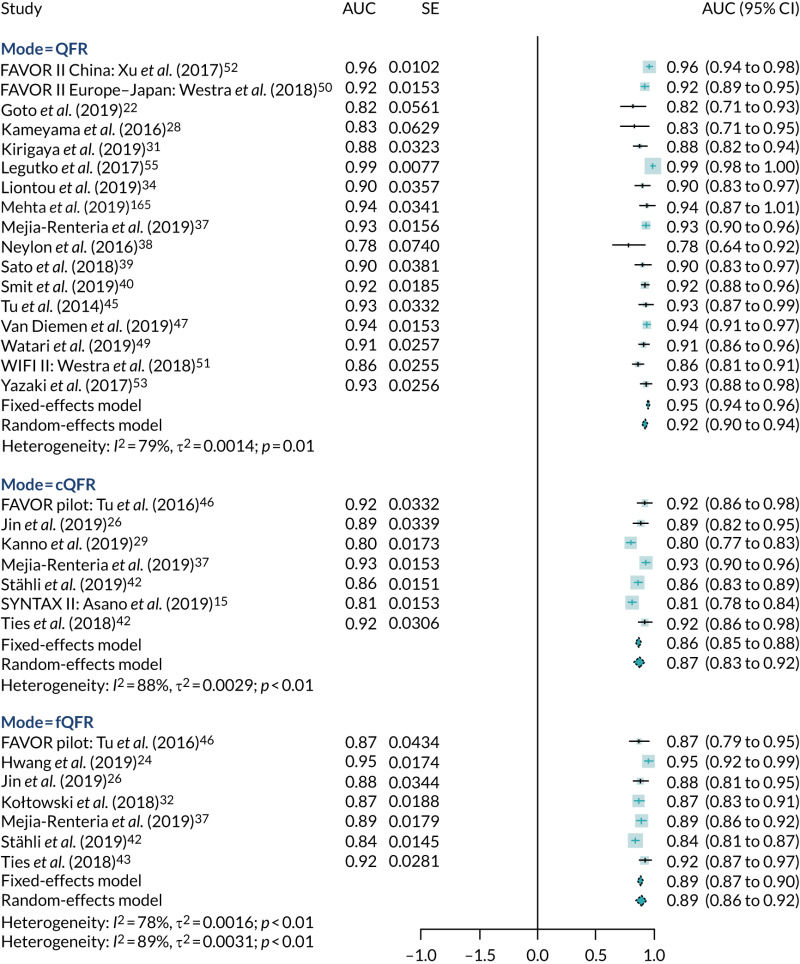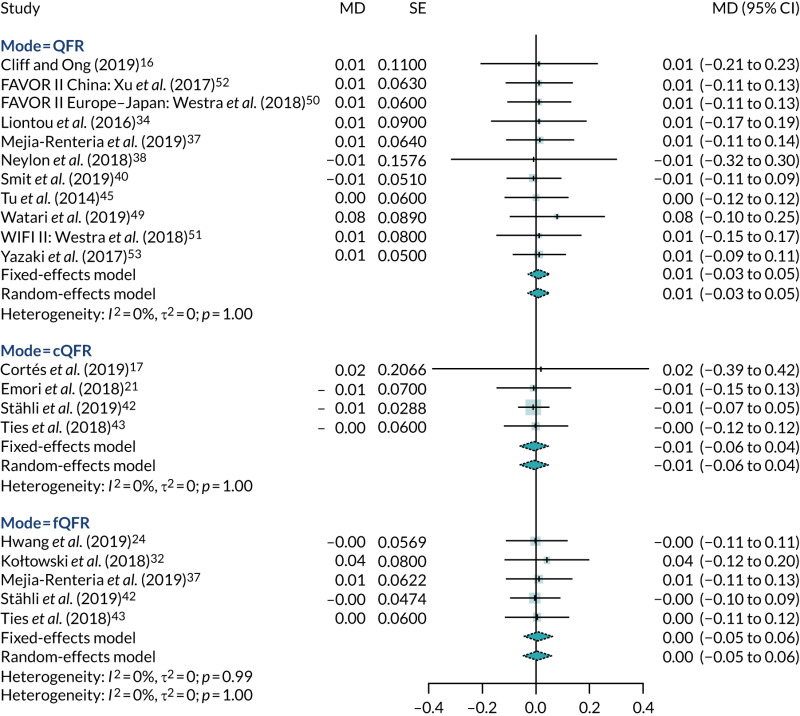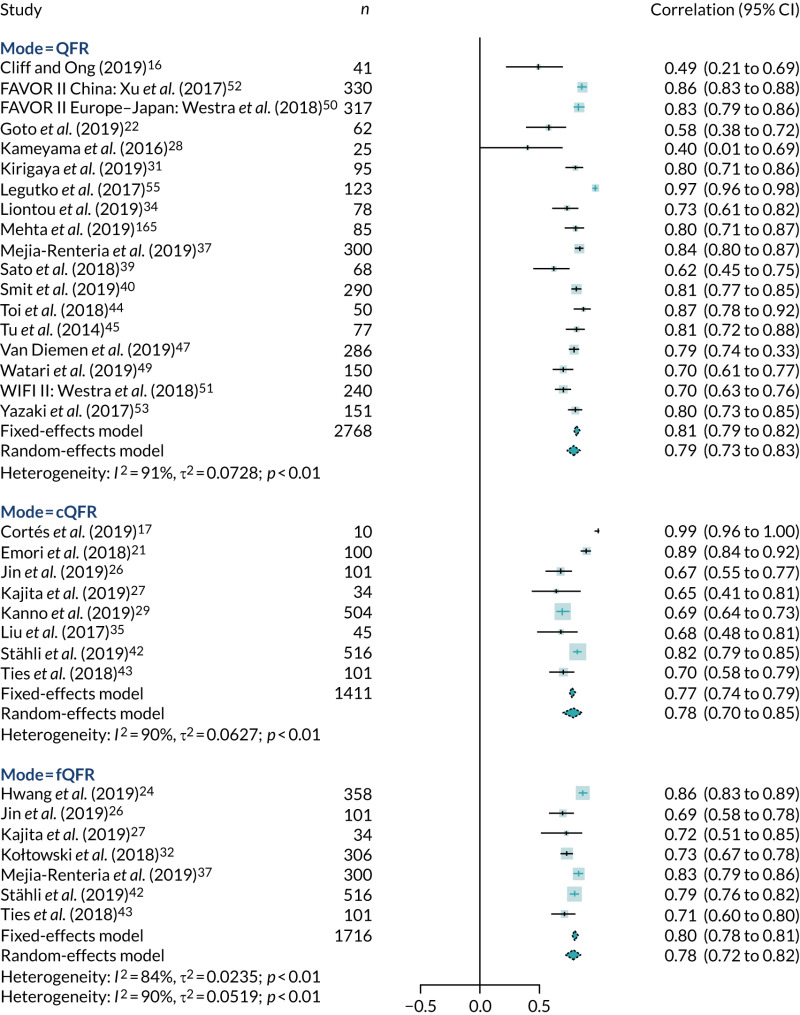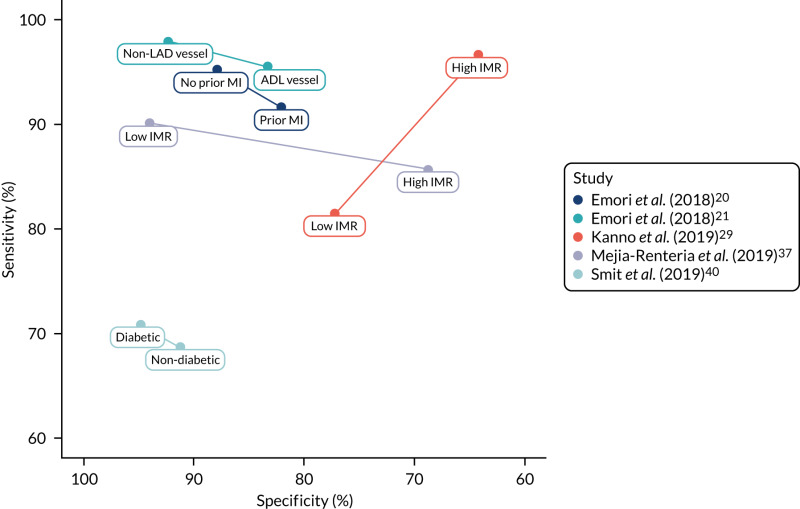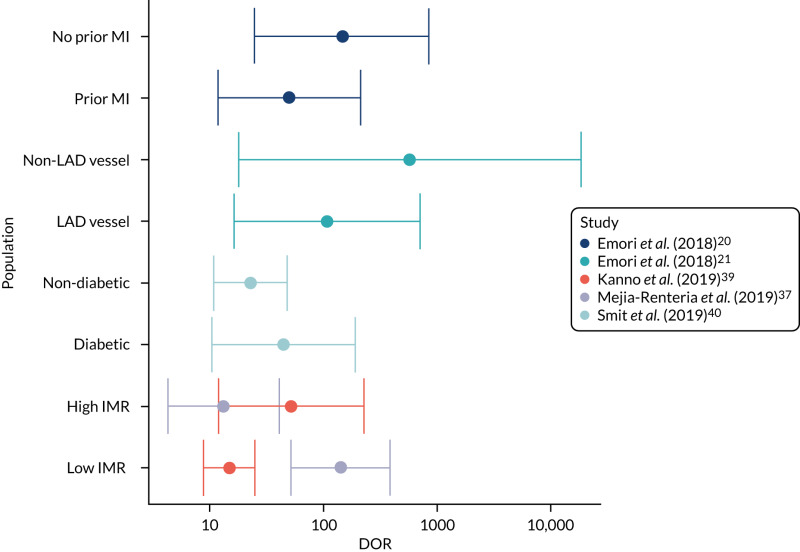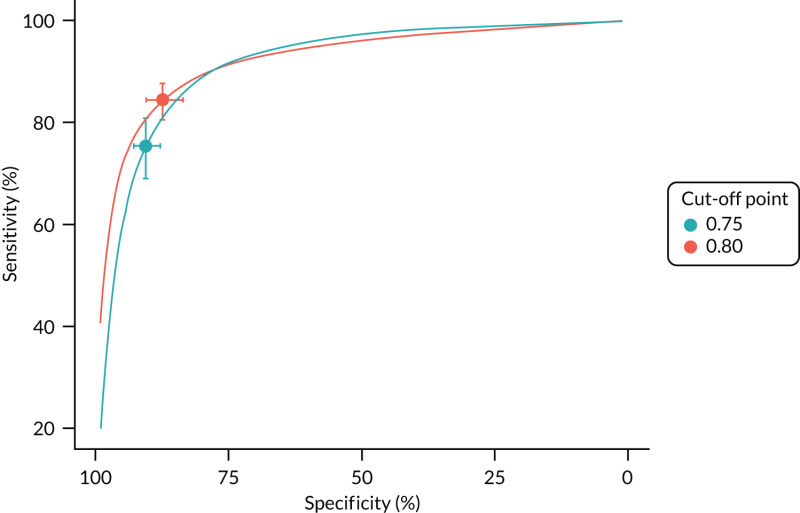NCBI Bookshelf. A service of the National Library of Medicine, National Institutes of Health.
Duarte A, Llewellyn A, Walker R, et al. Non-invasive imaging software to assess the functional significance of coronary stenoses: a systematic review and economic evaluation. Southampton (UK): NIHR Journals Library; 2021 Sep. (Health Technology Assessment, No. 25.56.)

Non-invasive imaging software to assess the functional significance of coronary stenoses: a systematic review and economic evaluation.
Show details
FIGURE 24
Receiver operating characteristic plot of bivariate meta-analysis.
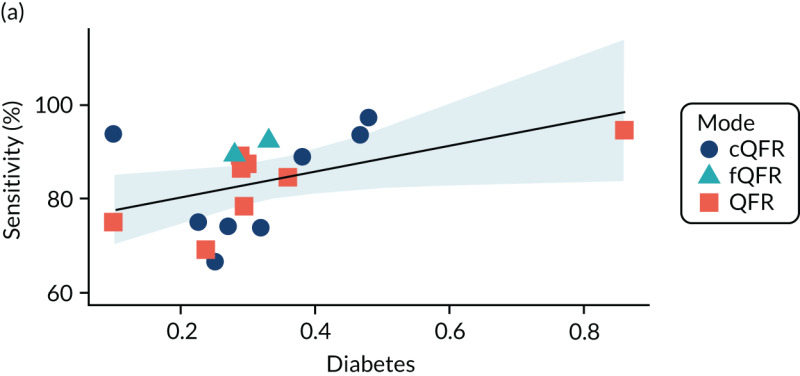
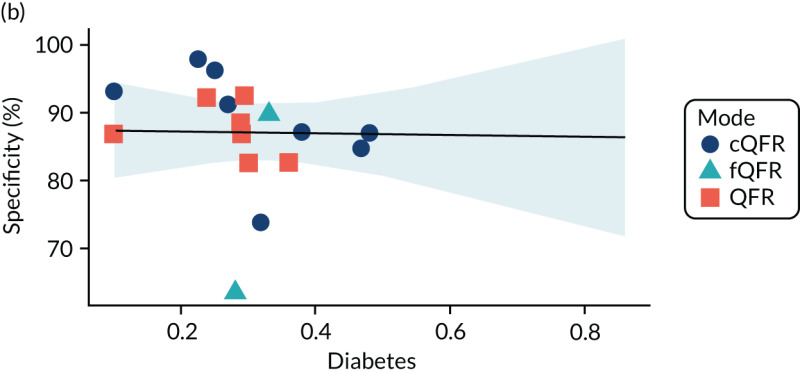

FIGURE 28
Metaregression of sensitivity, specificity and DOR by proportion with diabetes: (a) sensitivity; (b) specificity; and (c) log-DOR.


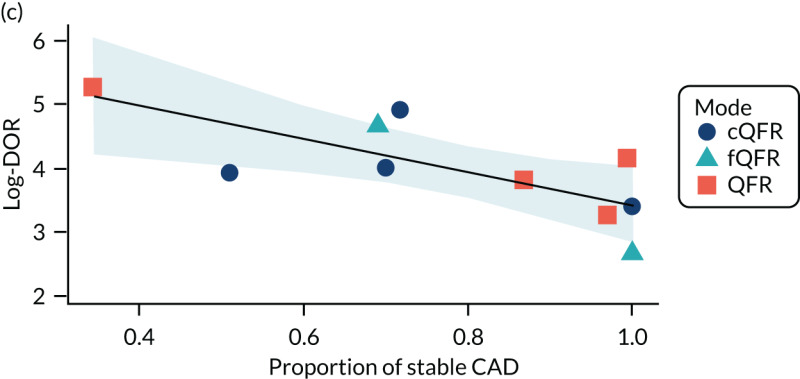
FIGURE 29
Metaregression of sensitivity, specificity and DOR by proportion with stable CAD: (a) sensitivity; (b) specificity; and (c) log-DOR.


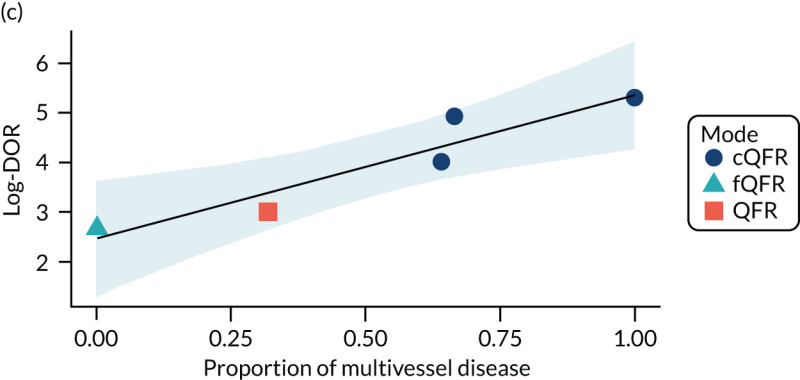
FIGURE 30
Metaregression of sensitivity, specificity and DOR by proportion with multivessel disease: (a) sensitivity; (b) specificity; and (c) log-DOR.
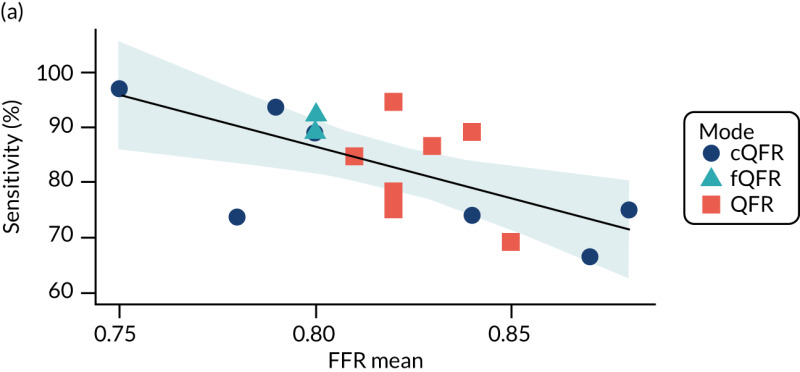
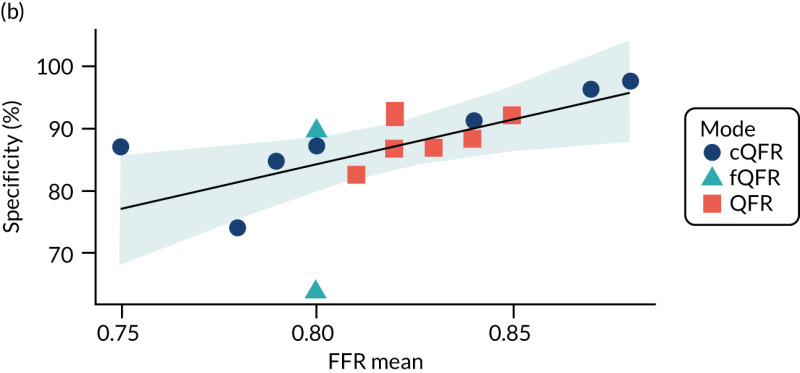
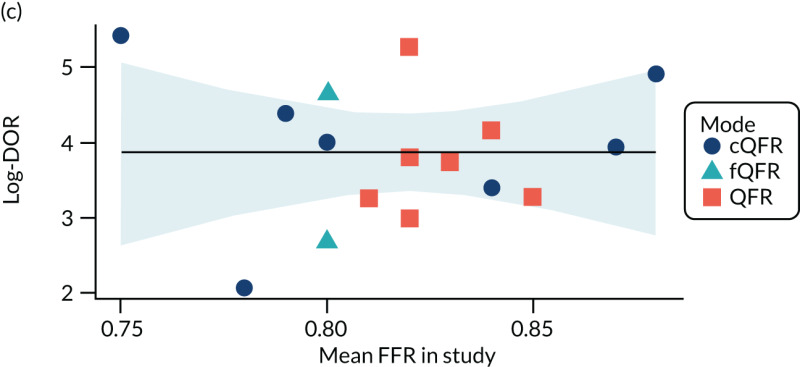
FIGURE 31
Metaregression of sensitivity, specificity and DOR by mean FFR: (a) sensitivity; (b) specificity; and (c) log-DOR.
TABLE 38
Regression parameters and p-values from metaregression analyses
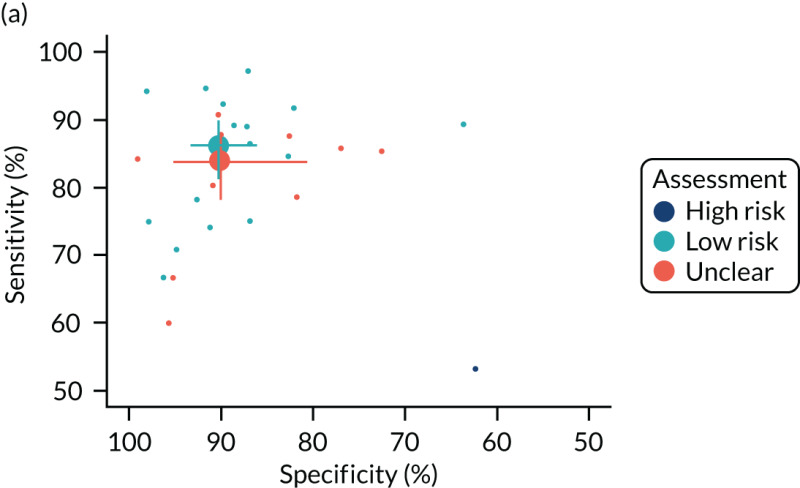

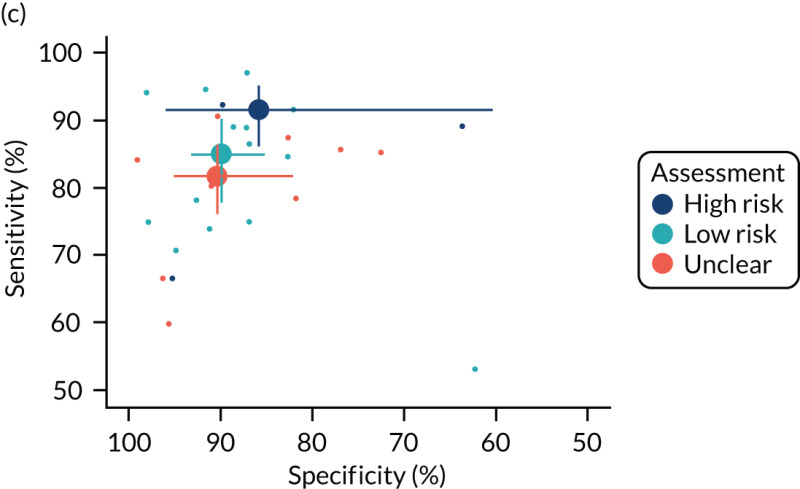
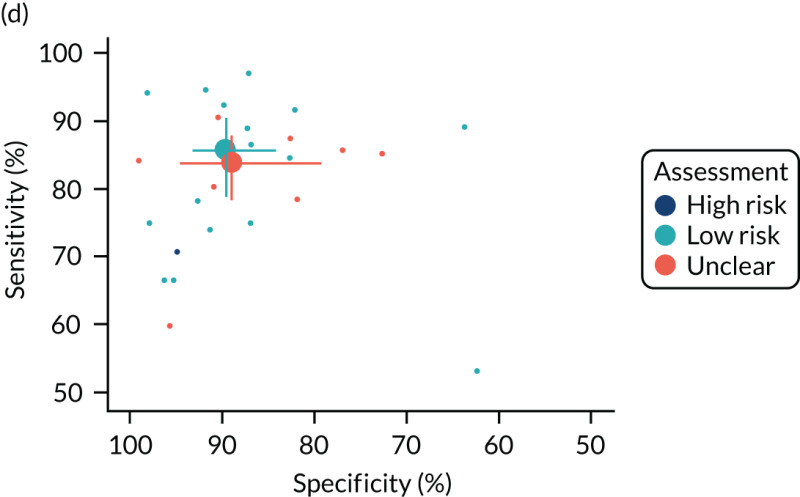
FIGURE 34
Bivariate meta-analyses according to QUADAS-2 risk-of-bias classification: (a) flow; (b) index text; (c) patient selection; and (d) reference standard.



FIGURE 35
Bivariate meta-analyses according to QUADAS-2 applicability classification: (a) index test; (b) patient selection; and (c) reference standard.




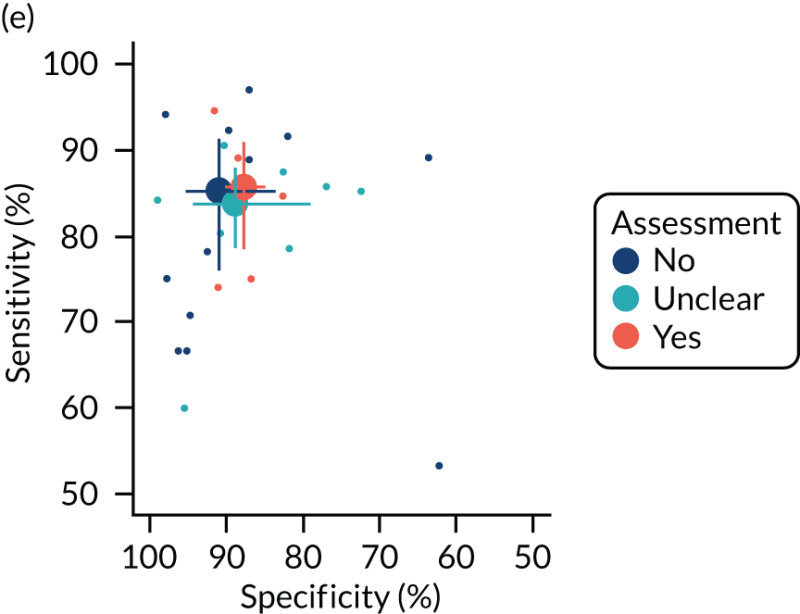

FIGURE 36
Bivariate meta-analyses according to other factors that might cause bias: (a) blinding; (b) both tests; (c) complete data; (d) online test; (e) same exam; and (f) stable CAD.
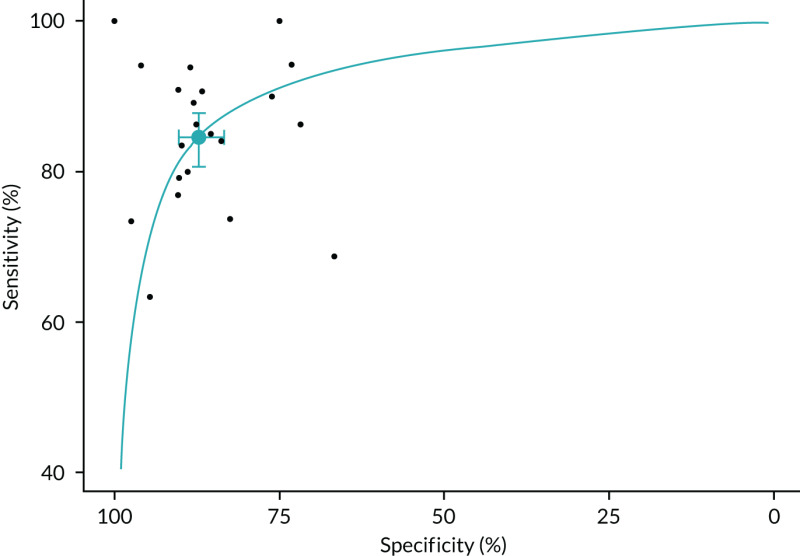
FIGURE 37
Bivariate meta-analysis of extracted figure data.
TABLE 39
Comparison of diagnostic accuracy based on figure data and text/table data
FIGURE 39
Difference between FFR and QFR values in the grey zone: (a) FN; (b) FP; (c) TN; and (d) TP.

FIGURE 40
Diagnostic accuracy of QFR with and without using the grey zone.
TABLE 40
Approximate grey-zone thresholds required for sensitivity and specificity of 90% or 95%
TABLE 41
Studies included in the meta-analysis 2D ICA
- Further meta-analysis results - Non-invasive imaging software to assess the func...Further meta-analysis results - Non-invasive imaging software to assess the functional significance of coronary stenoses: a systematic review and economic evaluation
- MIGS Viral sample from Staphylococcus phage CUB_BE-MRSA1_R26MIGS Viral sample from Staphylococcus phage CUB_BE-MRSA1_R26biosample
- Results of the review - An Evidence Synthesis of Qualitative and Quantitative Re...Results of the review - An Evidence Synthesis of Qualitative and Quantitative Research on Component Intervention Techniques, Effectiveness, Cost-Effectiveness, Equity and Acceptability of Different Versions of Health-Related Lifestyle Advisor Role in Improving Health
- Issues of importance to practitioners - Treatments for hyperemesis gravidarum an...Issues of importance to practitioners - Treatments for hyperemesis gravidarum and nausea and vomiting in pregnancy: a systematic review and economic assessment
- Discussion - Interventions to Reduce or Prevent Obesity in Pregnant Women: A Sys...Discussion - Interventions to Reduce or Prevent Obesity in Pregnant Women: A Systematic Review
Your browsing activity is empty.
Activity recording is turned off.
See more...



